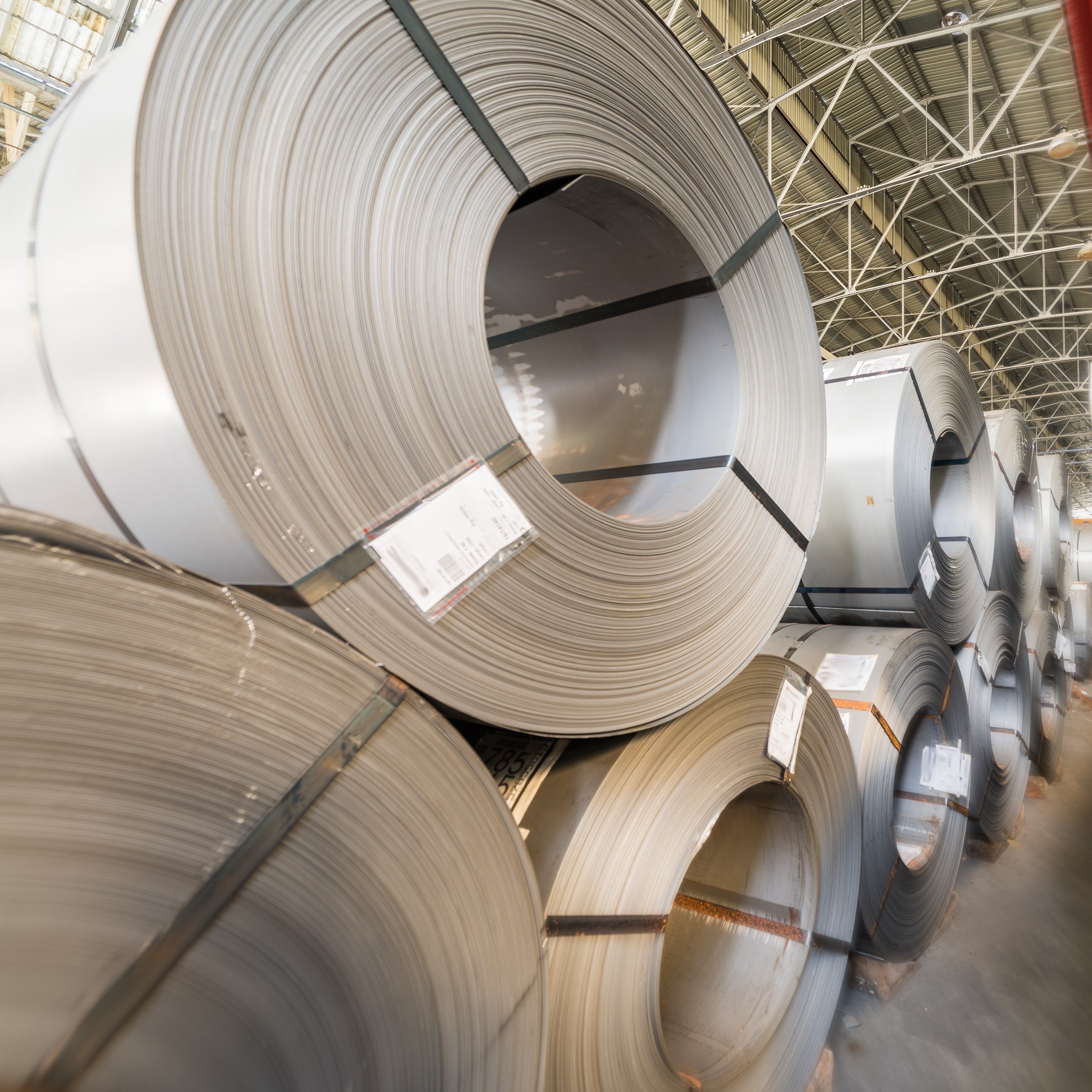Oversupply continues to pressure sheet prices in the USA
US sheet prices fell again m/m in August as supply availability continued to outstrip demand. While m/m falls in HR coil pricing were notably slower than the prior month, we are beginning to see more downside pressure mounting on CR coil and HDG coil. Much like July, the key drivers of this supply/demand imbalance were inventory levels, increasing mill competition, cooling demand, and falling raw material costs. Still, we expect price falls to slow once again, and perhaps stabilise briefly, in September as they near more historical spreads over costs and global prices.
Our week 2 HR coil price assessment in August came in at $802 /s.ton, a decline of $140 /s.ton m/m and $30 /s.ton w/w. While this is a notable decline in its own right, there is increasingly intense pressure on CR coil and HDG coil, which were both down by $219 /s.ton and $231 /s.ton m/m, respectively. Part of the decline for the latter product was the result of lower zinc prices, which sent coating weight extras for .06” G90 down by another $10 /s.ton m/m.
While preliminary service centre data by CRU-owned Steel Market Update show that shipping days of supply rose somewhat m/m in July, our models suggest that inventory levels remain in excess relative to current demand. This continued surplus has led to a reduction in buying activity overall, which is partially reflected by a m/m decline in material on order (down by 8% from June). With mills still competing for orders amid buyer hesitancy, lead times briefly dropped below the historic average of four weeks before returning to levels last seen in late June.
The one source of availability that has become scarcer recently is from the international market. With domestic prices falling and lead times shrinking, buyers are not looking to import any substantial amount of steel from overseas, especially now that prices in the USA are no longer at such a substantial global premium (see chart). Market participants report that export offers from Mexico and Canada are also not as competitive as they once were.
For demand, many key end-use sectors have continued to cool. In addition to softening construction demand, demand for yellow goods has also declined in recent weeks. Appliances still remain weak on a decline in new housing builds, and market participants overall report that they are having to cut prices to end users in order to maintain a reasonable level of work. The Institute for Supply Management’s PMI reading was down for a third month in the row—although it is still in growth territory—while Census Bureau data show that total construction spending underwent its first m/m decline since September 2021.
Sheet prices again found no support from raw material costs this month after scrap prices fell by $20-70 /l.ton depending on region and grade. The downturn in finished steel prices was partially responsible for limited mill buying activity for scrap, while elevated inventory levels at shredders and sufficient prime grade output from the manufacturing sector kept the market well supplied.
Sheet prices on the US West Coast fell as mills began accepting September orders. HR coil prices dropped by $105 /s.ton, while CR and HDG coil prices both fell by $135 /s.ton. Buyers have seen improvement in the availability and price for truck shipments but are still experiencing extended lead times for rail, making it more difficult to purchase material from other regions of the country. To compensate, buyers have begun building five to seven weeks for transport into their schedules. Demand is down slightly from last year, but most companies expect it to remain at current levels rather than continue falling.
In Mexico, sheet prices kept falling m/m, decreasing by 7% for HR coil and 5% for CR coil due weaker domestic demand and lower international prices. On the demand side, the production of light vehicles in July decreased by 9% m/m. The production of the first half of 2022 is 17% lower than the pre-pandemic level as the sector is still constrained by the shortage of semiconductors and components. On the supply side, Ternium’s new HSM in Pesquería is running at around 85% of capacity. In their last earnings’ call, they mentioned the ramp up is going well but weaker demand in the market is holding the facility from reaching full capacity.
Outlook: Price declines are not yet over but will slow
In our view, the $50 /s.ton price increase announcement from Nucor may allow prices to temporarily stabilise in the coming weeks. Certainly, if other mills match this increase and follow it up with restricted production, higher sheet prices may be achieved in the near term. For now, though, buyers are generally sceptical that this price increase will actually be accepted in its entirety by the market.
The downside risk to this forecast continues to centre around the ramp up of new capacity during the remainder of the year. With demand cooling, this increase in domestic supply may result in a temporary glut of material and keep downward pressure on prices for most of the year.
The premium US HR Coil prices held over those elsewhere is quickly evaporating
















